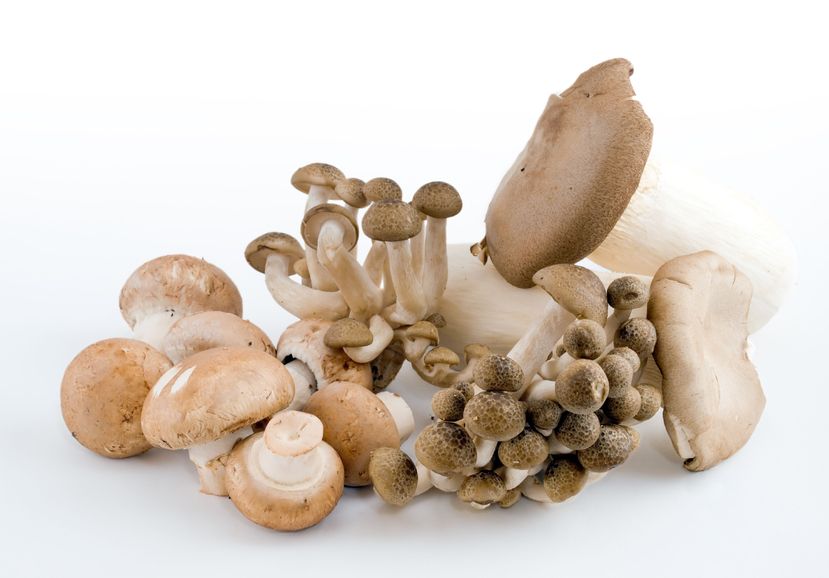What are the health benefits of mushrooms? Want to make you meals more nutritious, just add mushrooms. There are a wide variety of different types of mushrooms readily available. They can add a savory, umami flavor to any dish.
Mushrooms are fungi – a member of the third food kingdom – biologically distinct from plant and animal-derived foods that comprise the USDA food patterns yet have a unique nutrient profile that provides nutrients common to both plant and animal foods.
Although classified into food grouping systems by their use as a vegetable, mushrooms’ increasing use in main entrees in plant-forward diets is growing, supporting consumers’ efforts to follow food-based dietary guidance recommendations to lower intake of calories, saturated fatty acids, and sodium while increasing intake of under-consumed nutrients including fiber, potassium and vitamin D.
Often grouped with vegetables, mushrooms provide many of the nutrient attributes of produce, as well as attributes more commonly found in meat, beans or grains.
New Study on the Health Benefits of Mushrooms
Researchers have identified another good reason to eat more mushrooms. New research, sponsored by the Mushroom Council and published in Food Science & Nutrition (January 2021) found that adding a mushroom serving to the diet increased the intake of several micronutrients which are typically shortfall nutrients, such as vitamin D. Importantly, you can add mushrooms to your diet without worrying about calories, sodium, or fat.
Study Design
• Dr. Victor L. Fulgoni III and Dr. Sanjiv Agarwal modeled the addition of mushrooms to National Health and Nutrition Examination Survey (NHANES) 2011-2016 dietary data.
• They looked at a composite of white, crimini and portabella mushrooms.
• One scenario included UV-light exposed mushrooms; and another focused on oyster mushrooms.
• Both were based on the addition of a ½ cup serving.
Key findings include:
• Adding an ½ cup serving of mushrooms increased several shortfall nutrients including potassium and fiber.
• This was true for the white, crimini and portabella and oyster mushrooms.
• The addition of a ½ cup serving to the diet resulted in a 5-6% increase in dietary fiber.
• It also increased these nutrients: copper (24%-32%), phosphorus (6%), potassium (12%-14%), selenium (13%-14%), zinc (5%-6%), riboflavin (13%-15%), niacin (13%-14%), and choline (5%-6).
• When commonly consumed mushrooms are exposed to UV-light to provide 5 mcg vitamin D per serving, vitamin D intake could meet and slightly exceed the recommended daily value (98% – 104%), as well as decrease inadequacy of this shortfall nutrient in the population.
• A serving of UV-light exposed commonly consumed mushrooms decreased population inadequacy for vitamin D from 95.3% to 52.8% for age group 9-18 years and from 94.9% to 63.6% for age group 19+ years.
“This research validated what we already knew that adding mushrooms to your plate is an effective way to reach the dietary goals identified by the DGA,” said Mary Jo Feeney, MS, RD, FADA and nutrition research coordinator to the Mushroom Council.
“Data from surveys such as NHANES are used to assess nutritional status and its association with health promotion and disease prevention and assist with formulation of national standards and public health policy (CDC, 2020).”
Click here to read more about the health benefits of mushrooms.






